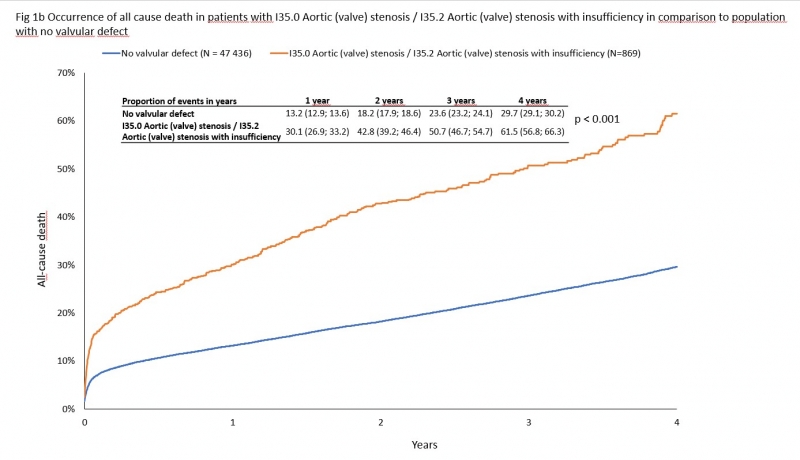CLINICAL CHARACTERISTICS AND OUTCOME OF PATIENTS WITH ACUTE MYOCARDIAL INFARCTION AND PRE-EXISTING LEFT HEART VALVULAR DISEASE
With aging population and rising prevalence of cardiovascular risk (CV) factors, the global number of patients with acute myocardial infarction (AMI) and left valvular heart disease (VHD) is expected to increase substantially. We aimed to analyze the impact of pre-existing significant mitral regurgitation (MR) and aortic stenosis (AS) on clinical characteristics and outcome of AMI. The analysis is based on national registry of AMI enriched by National Registry of Reimbursed Health Services. Among 47,436 AMI-patients admitted during 2017-2021 selected VHD was documented in 1,445 (3.0%) patients; 510 (35.3%) with MR, 869 (60.1%) with AS. Patients with VHD (compared towithout) had worse CV risk profile - older (mean(SD)) age 73.9(10.6) vs. 65.6(12.5)ys, more previous PCI 23.5% (vs. 14.9%), CABG 23.4% (vs. 5.3%), higher comorbidity (diabetes 27.6% vs. 20%, CKD 11.9% vs. 5%); p<0.001 for all comparisons. NSTEMI was the most frequent manifestation in 58.9% of VHDpatients (vs. 41.3% without, p<0.001). Patients with VHD had a wider extent of coronary artery disease with multivessel- 61.5% (vs. 53.6%) and left maindisease 10.9% (vs. 5.5%), a higher proportion of TIMI 3 before PCI in 48.8% (vs. 38.0%), and with more frequent ≤80% IRA-stenosis in 20.0% (vs. 13.1%);p<0.001 for all comparisons. The presence of VHD fundamentally affects the short- and long-term prognosis (Fig). The AS patients had the highestprevalence of diabetes (30.1%), the highest risk of Killip ≥3 (OR 1.78; 95%CI 1.48-2.15) and need of mechanical ventilation (OR 1.29; 95%CI 1.04-1.59),and the highest risk of death.
Conclusion. Preexisitng significant VHD modifies the risk profile, presentation, and prognosis of AMI patients. AS patientshave the worst prognosis, which may point to the need for earlier planning of valvular intervention, especially in those with current coronary disease.
